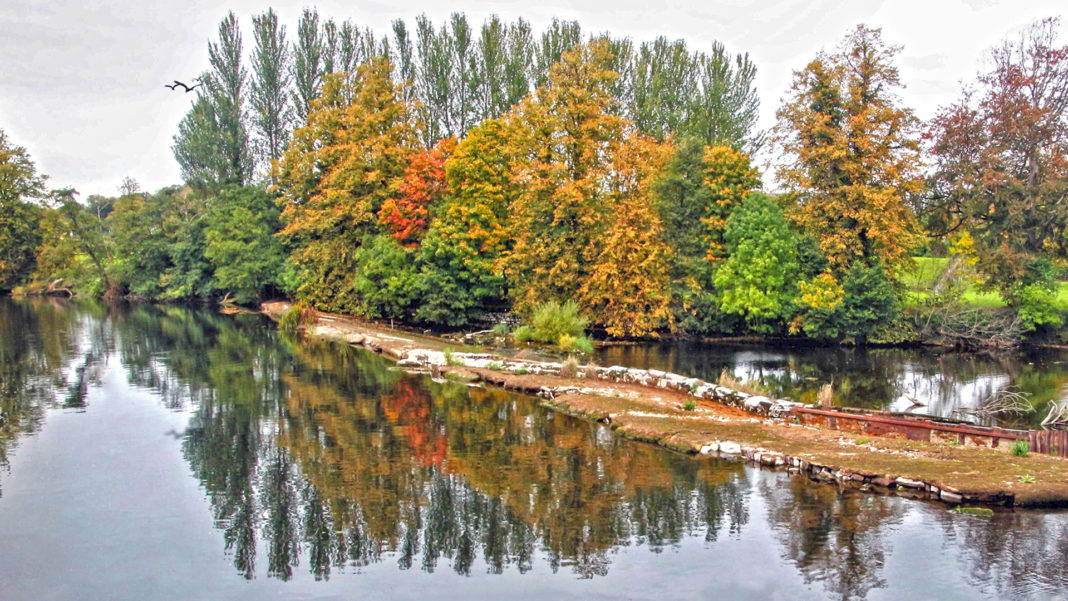It’s that time in the five-year cycle when local and European candidates suddenly remember the electorate. In Fermoy, voters should ask politicians how they intend to protect almost a millennium’s worth of history, and to safeguard the town’s future, writes Donal O’Keeffe.
It is probable there has been a weir on Fermoy’s Blackwater for at least 800 years. We don’t have an exact date for the building of Fermoy’s first weir, but we know that the Cistercian monks built their abbey on the banks of the Blackwater in 1170, and we know there was a weir on the river during their time in Sancta Maria de Castro Dei (Our Lady of the Camp of God).
We know that Thomas Cromwell, chief minister to Henry VIII, mentions the weir at the abbey in Fermoy in his inventory of monasteries for the king.
Thomas Cromwell is a fascinating character. Usually portrayed in fiction as a villain, he has of late enjoyed a certain rehabilitation following Hilary Mantel’s sympathetic portrayal of him in her Man Booker Prize-winning novels Wolf Hall (2009) and Bring Up The Bodies (2012).
Born around 1485, and rising from the humblest of beginnings on the banks of the Thames, Cromwell became the king’s fixer and one of the most powerful men in Tudor England.
In 1539, following the death two years earlier of Henry’s third wife, Jane Seymour, after the birth of their son, Edward VI, Cromwell helped to arrange the 49-year-old Henry’s wedding to the 25-year-old Anne of Cleves.
The painter Hans Holbien the Younger travelled to Cleves and produced a flattering portrait which aroused the king’s interest, and Cromwell himself seems to have over-sold Anne’s beauty. On meeting his new wife, Henry was somewhat less than impressed.
“I like her not,” spat the king, and soon he demanded, and received, an annulment. Cromwell’s enemies at court seized their opportunity to finally displace the low-born upstart who long had Henry’s ear. Cromwell was arrested for treason on June 10 1540, and was parted – messily – from his head on July 28.
Interestingly, in his book Thomas Cromwell: A Life, Sir Diarmaid MacCulloch, fellow of St Cross College, Oxford, and Professor of the History of the Church at the University of Oxford, suggests we are pronouncing Cromwell’s name incorrectly, and that he is likely to have been known by the far humbler-sounding “Crummell”.
(Similarly, we remember Charles Stuart Parnellas “ParNELL”, placing the emphasis on the second syllable of his name, though it is believed he would have pronounced his name “PARnell”.)
However pronounced, the name Cromwell is not beloved in Ireland, and Thomas was an ancestor of the Puritan leader. Thomas Cromwell’s nephew Richard was the great-grandfather of Oliver Crummell, as nobody west of the Shannon is likely to call him.
WEIR ALLOWED TO 'CRUMBLE'
This January, a huge section of the millrace wall of Fermoy Weir fell away, at exactly the point where during flood relief works, extensive pile-driving into the riverbed was carried out and thousands of tonnes of rubble dumped into the river. Two weeks ago, Paul Kavanagh and Tommy Lawton of Save Our Weir Save Our Salmon alleged to an Oireachtas committee a direct causal link between those actions and the millrace wall collapse.
Fermoy’s past is endangered, and its river is at an 800-year low. John Anderson built his weir as the industrial cornerstone of his fledgling town. We don’t know if he chose a new site, or if he built on an earlier structure, but either way there has been a weir on Fermoy’s Blackwater for untold centuries. The fact is Fermoy Weir is a listed, protected, historical structure, and politicians and bureaucrats have allowed it to crumble.
Fermoy’s present is compromised, and its river is at an 800-year low. Right now 150 oarspeople from Fermoy Rowing Club, ranging in age from 12 to 18, and 50 adult oarspeople, cannot row on the Blackwater because the river is too low; right now two Triathlon events have already been cancelled because the river is too low; right now the Spiorad Saor John Mahon, the Wheelyboat, Ireland’s only Mark III wheelchair-accessible fishing boat, cannot take to the water because the river is too low.
The fact is Fermoy Weir has, for centuries, kept the Blackwater west of the bridge at the height which makes Barnane the heart of Fermoy, and politicians and bureaucrats have allowed it to crumble.
IMPERILLED FUTURE
Fermoy’s future is imperilled, and its river is at an 800-year low. If that sounds a hysterical claim, imagine the town’s future potential as a tourism centre, with Wheelyboats touring the river every day. Imagine a restored weir, lit-up as a permanent feature on our river. Imagine turbines on the mill-race wall, with our generation harnessing the Blackwater, as Anderson did, to power our town. The fact is Fermoy Weir could play a vital role in securing a prosperous and sustainable future for Fermoy, and politicians and bureaucrats have allowed it to crumble.
I spoke last week with Sir Diarmaid MacCulloch, Thomas Cromwell’s biographer. MacCulloch has suggested that Cromwell, the man nicknamed “the hammer of the monasteries”, had such an interest in waterways and a disdain for weirs that – had history played out differently – he might well have lived to become “the hammer of the weirs”.
On learning of the local campaign to save Fermoy Weir from the inaction of Cork County Council, and from the agenda to remove it by Inland Fisheries Ireland, Professor MacCulloch wished the people of Fermoy well, saying:
“Nice to think that you may defend a weir against Cromwell's lesser successors.”
The Local and European Elections take place this Friday, 24 May, and now – after five years – politicians suddenly remember the electorate.
Cork County Council, and Fermoy Town Council before it, and Inland Fisheries Ireland, have allowed Fermoy Weir to crumble.
Fermoy voters should ask its candidates what – if anything – they intend to do to save Fermoy Weir.








